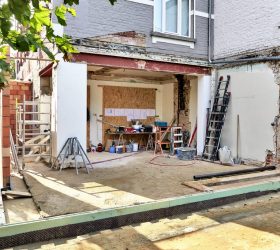The signs of structural damage in a home are most of the time subtle and go unnoticed unless you know what signs to look for. When they are pointed out to you by the home inspector you will be surprised as to how you did not notice it at all. Home Structure Repair must be taken up as soon as possible once you have assessed the damages. Everyone wants to feel comfortable and peaceful at home. The structural damage causes a lot of stress and fear in the minds of the people living in the house.
Let us see how to identify the structural damage in its early stage so that repairs can be taken up before more damage occurs. A stitch in time saves nine.
- The best place to look for structural abnormalities is by standing across the street and observing your building. When you see from a distance you will be able to notice if your building has tilted to one side which will not be apparent at close quarters though you may have noticed a few cracks in the walls.
- Another tell-tale sign of structural damage is the sagging roof and leaking roof. The normal life of roof cladding is about 30 years but if it starts leaking before that period then you must check for timber frame movement. Weather-induced damages is also an important factor. If your roof is in bad shape you must hire experts in Home Structure Repair at the earliest.
- An important sign of structural damage is an uneven floor. The unevenness may vary and it may go unnoticed till the problem has become big. The causes for this can be a settling of foundation or improper construction. Sometimes cracked floor joists also create unevenness. Termite damage is a cause that will require immediate attention and proper treatment or replacement of the infected wood before it spreads.
- Ill-fitting doors and windows are a tell-tale sign of significant damage to the structure. When your doors do not shut properly and windows get stuck while opening or closing them, this may be because the ground under the foundation has shifted. Homes that are built on concrete slabs and clay soils may suffer what is known as slab heave. In case your home is on stumps then restumping a part or the whole home may be necessary.
- If there are exposed gaps between the internal and the external walls then you must check for sagging floor joists. The cause for this may be either the support pillars are spaced too far from each other or they have been destroyed by termites. There is the possibility of foundation settling too after the completion of your construction.
Conclusion
Regular inspection of the structure of your house can go a long way in identifying any damage that may have occurred in the early stages. You must consult Home Structure Repair experts and get the repairs done at the earliest. The more you delay repairs the costlier they become with the possibility of increased damages.
